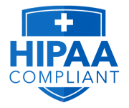For decades, microfilming of documents was a reliable method to preserve important historical and archival documents while saving space. But, with growing demands for accessibility and data sharing, many libraries and archives are now moving toward microfilm digitization, a process that converts microfilm into easily accessible digital files. This transition is reshaping how institutions maintain, access, and share historical collections.
Benefits of Microfilm Digitization
Once considered a niche technology, microfilm digitization is now gaining traction as a mainstream solution, driven by a range of advantages. Let’s take a look at how digitizing the microfilm of documents helps libraries and archives.
1. Preservation and Longevity
Microfilm, while resilient compared to paper, is not immune to time. Temperature fluctuations, humidity, and repeated handling can cause reels to deteriorate, warp, or develop vinegar syndrome. By converting these analog records into digital formats, institutions create permanent, lossless copies that can be stored, replicated, and shared across multiple platforms. This digital safety net ensures the longevity of historical records without the need for ongoing physical upkeep.
Why it matters:
- Digital versions protect content from environmental degradation.
- Fragile originals can be preserved in controlled archives with minimal handling.
- No longer reliant on specialized, often obsolete microfilm hardware.
- Multiple backups (on local drives and cloud platforms) add an extra layer of preservation.
2. Enhanced Accessibility
Historically, accessing microfilm required physical presence at an archive, time-consuming reel browsing, and specialized readers. Digitization shatters these barriers. Researchers, students, journalists, and curious individuals can access records online anytime, anywhere. This improved availability fosters broader academic collaboration, community engagement, and educational use, especially vital for under-resourced institutions and rural areas.
Key benefits:
- Enables instant global access through password-protected portals or public databases.
- Removes geographical and logistical hurdles for users.
- Encourages interdisciplinary research by integrating digital archives with modern tools.
- Makes historical materials more accessible to younger, tech-native audiences.
3. Space Optimization
Physical microfilm collections often occupy substantial archival real estate. Reels, cabinets, and viewing equipment require dedicated, climate-controlled areas. By digitizing these materials, institutions can reclaim space and reduce long-term facility costs. Freed-up space can then be used for more community-facing services, new acquisitions, or exhibitions.
Space-saving highlights:
- Hundreds of thousands of images can be stored on a single solid-state drive.
- No need for large, climate-controlled cabinets or bulky readers.
- Digital files can be hosted off-site or in the cloud, reducing on-premises storage needs.
- Enables smaller institutions to preserve more content without expanding physical infrastructure.
4. Search and Retrieval Efficiency
One of the most frustrating limitations of traditional microfilm is the time-consuming search process. Users must scroll through reels manually, with no guarantee they’ll find what they’re looking for. Digitized collections, by contrast, can be keyword-searchable using OCR and enhanced with metadata for precise categorization. This drastically reduces the time it takes to locate specific records.
Search capabilities include:
- Full-text OCR enables rapid scanning across large volumes.
- Metadata tagging allows for nuanced search filters by date, location, subject, etc.
- Batch retrieval functions streamline archival workflows.
- Improves user satisfaction by delivering quick, relevant results.
5. Collaborative Research Opportunities
In the analog world, microfilm was confined to its physical location or had to be physically shipped between institutions. Digitization transforms this paradigm by enabling real-time sharing of materials. Libraries, museums, universities, and research centers can collaborate, combine digital archives, and even create joint virtual exhibitions without logistical delays.
This allows for:
- Co-curated digital exhibits showcasing shared history or themes.
- Seamless integration of resources across international research communities.
- Better service to multilingual or diaspora communities through shared access.
- Crowdsourcing metadata and annotations from diverse academic contributors.
6. Disaster Preparedness
Archives are always vulnerable to natural and man-made disasters, including floods, fires, mold outbreaks, theft, and equipment failures. While microfilm can sometimes survive these events, it’s still a single point of failure. Digitization provides a proactive disaster recovery strategy: institutions can store multiple encrypted backups in cloud environments and quickly restore access in an emergency.
Preparedness benefits:
- Cloud-based systems can instantly replicate and distribute copies.
- Off-site storage ensures data continuity even in local crises.
- Faster recovery time improves service continuity for patrons.
- Reduces stress on staff during crisis response.
7. Cost-effective Solutions
Maintaining physical microfilm collections comes with hidden costs like equipment repairs, environmental controls, staff time, and frequent user assistance. Digitized systems reduce or eliminate many of these expenses. While there’s an upfront investment in scanning and platform setup, the long-term ROI is significant.
Cost benefits:
- No ongoing maintenance of readers, cabinets, or reels.
- Fewer personnel hours needed for locating and retrieving documents.
- Reduced need for climate-controlled storage spaces.
- Easier to distribute files electronically for internal or public use.
Real-Life Examples of Microfilm Digitization in Action
Digitization is actively transforming how institutions manage and share historical content. From national archives to local libraries, these real-world examples showcase the powerful impact of modernizing microfilm collections.
National Archives and Records Administration (NARA)
The U.S. National Archives has undertaken extensive microfilm digitization to increase access to federal records. By converting millions of pages into searchable digital files, NARA has enabled researchers, historians, and the general public to access crucial documents without ever setting foot in the archive.
Specific impact:
- Substantial growth in remote access, especially during and after the pandemic.
- Digital records now serve genealogists, educators, and documentary producers worldwide.
- Staff are less burdened by in-person retrieval requests, allowing more focus on preservation and education.
- Popular collections, such as census records and military service files, are now accessible through online portals 24/7.
Library of Congress – Chronicling America Project
This ongoing initiative aims to digitize and preserve thousands of historic newspapers from all 50 states. By transforming microfilmed editions into a searchable, user-friendly database, the Library of Congress has revived local journalism as a window into American life.
Notable outcomes:
- Millions of newspaper pages from the 18th to 20th centuries are now free and online.
- Widely used in K–12, university, and independent research projects.
- Teachers incorporate it into digital history lessons, while genealogists use it to trace family milestones.
- Communities rediscover forgotten local stories and civic milestones through this accessible archive.
Local Libraries and State Archives
Smaller institutions across the U.S. like the New York State Archives, regional historical societies, and town libraries use digitization to protect and share their microfilmed records. These often include birth and death registries, marriage licenses, land deeds, and town meeting minutes.
Why it matters:
- Digitization protects fragile microfilm reels from decay, ensuring long-term access.
- Local history becomes more engaging for schools, researchers, and residents.
- Citizens can explore community heritage, neighborhood changes, or even their family’s civic involvement.
- Municipal governments benefit from more efficient document retrieval, particularly for FOIA and legal requests.
Bottom Line
Digitizing microfilm is a strategic move toward modernization, accessibility, and long-term preservation. It empowers libraries and archives to reach broader audiences, optimize internal operations, and reduce dependency on aging technologies. Institutions can repurpose physical storage, create engaging educational tools, and protect valuable content from loss.
As the cost of digitization drops and cloud storage becomes more secure, more institutions are recognizing that it’s essential. Microfilm digitization is now a core component of future-ready information management.
If your institution is exploring digitizing solutions, Smooth Solutions offers the tools, experience, and personalized service to help you make the transition with confidence.














